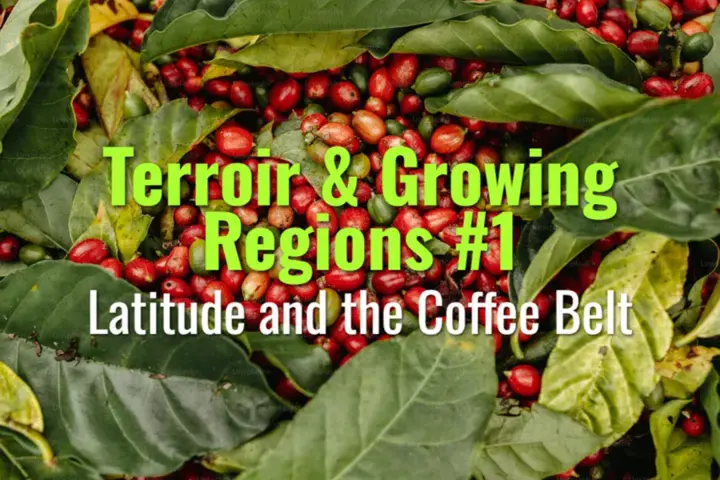Latitude and the Coffee Belt
This topic introduces the concept of the Coffee Belt—the latitudinal zone where coffee grows best—explaining its geographic range, climatic conditions, and why it is central to global coffee production.
- Coffee Basics Nerds
- 2 min read
Article 1 of 12 in Terroir & Growing Regions/

The Coffee Belt Defined
- Geographic zone: Coffee grows mainly between the Tropic of Cancer (23.5° N) and the Tropic of Capricorn (23.5° S).
- Nickname: This latitudinal band is known as the Coffee Belt.
- Countries involved: Over 70 coffee-producing nations, spanning Latin America, Africa, Asia, and Oceania.
Climatic Requirements
- Temperature: Optimal range 15–24°C for Arabica; 22–30°C for Robusta.
- Rainfall: 1,200–2,200 mm annually, with distinct wet and dry seasons.
- Altitude interaction: Higher altitudes in equatorial regions allow cooler climates suitable for Arabica.
- Day length: Relatively consistent near the equator, providing stable growing conditions.
Regional Examples
- Latin America: Brazil, Colombia, Guatemala—diverse microclimates and altitudes produce varied cup profiles.
- Africa: Ethiopia, Kenya, Tanzania—birthplace of coffee, unique terroirs, high genetic diversity.
- Asia-Pacific: Vietnam, Indonesia, Papua New Guinea—major Robusta production alongside distinct Arabica origins.
Latitude–Altitude Relationship
- Near the equator (0–10°): Coffee grows at higher elevations (1,200–2,200 m) due to cooler mountain climates.
- Farther from the equator (10–23°): Coffee can grow at lower altitudes because temperatures are naturally cooler.
- Example: In Colombia (near equator), Arabica thrives above 1,200 m; in Mexico (higher latitude), it can grow at 600–1,000 m.
Agricultural Implications
- Farmers select sites based on both latitude and elevation.
- Climate change shifts suitable zones, pushing coffee higher up mountains or into new latitudinal regions.
- Robusta may expand into zones where Arabica becomes unsustainable.
Lasting Importance
The Coffee Belt defines the global geography of coffee. Its consistent climate, moderated by altitude and rainfall, makes it the backbone of world coffee supply. Understanding latitude helps explain why certain countries dominate production and why terroir expression varies so dramatically across regions.